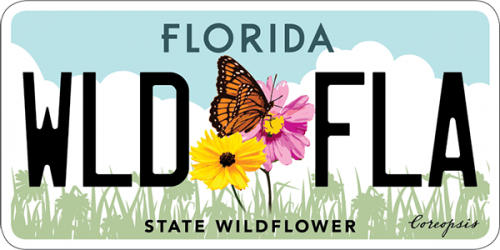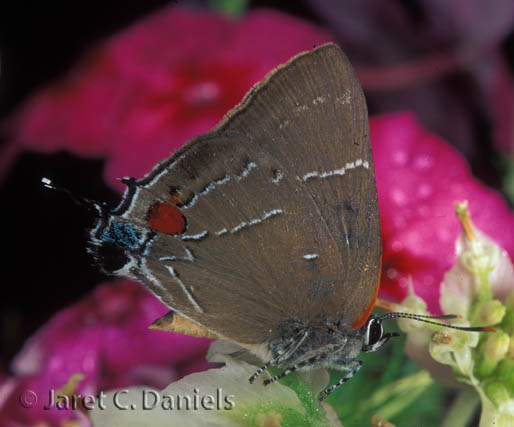- Family name: Lycaenidae/Gossamer Wings
- General description: Male iridescent blue with broad black borders; forewing with gray stigma. Female black with blue scaling limited to wing bases. Ventral hindwing gray-brown with two short tails, a red postmedian spot, a small white spot along leading margin, and a jagged white postmedian line forming the letter “M”
- Field Marks: small; ventral hindwing with a red postmedian spot, a small white spot along leading margin, and a jagged white postmedian line forming the letter “M”
- Sexes: appear different
- Wingspan: 25-32 mm
- Life Cycle: Egg: whitish, flattened, laid singly on host leaves or buds Mature larva: green to maroon Chrysalis: mottled brown
- Number of Generations: Three or more
- Flight Season: March -November
- Abundance: Common
- Habitat: oak woodlands, forest margins and clearings, roadsides
- Larval Host Plants: oaks (Quercus spp.)
- Similar Species: No similar species
- Additional Information: Adults often seen at flowers alongside other similar hairstreaks
- Range in Florida
 The Florida Wildflowers & Butterflies projects at the Florida Museum are sponsored in part by the State of Florida and the Florida Wildflower Foundation, Inc.
The Florida Wildflowers & Butterflies projects at the Florida Museum are sponsored in part by the State of Florida and the Florida Wildflower Foundation, Inc.
